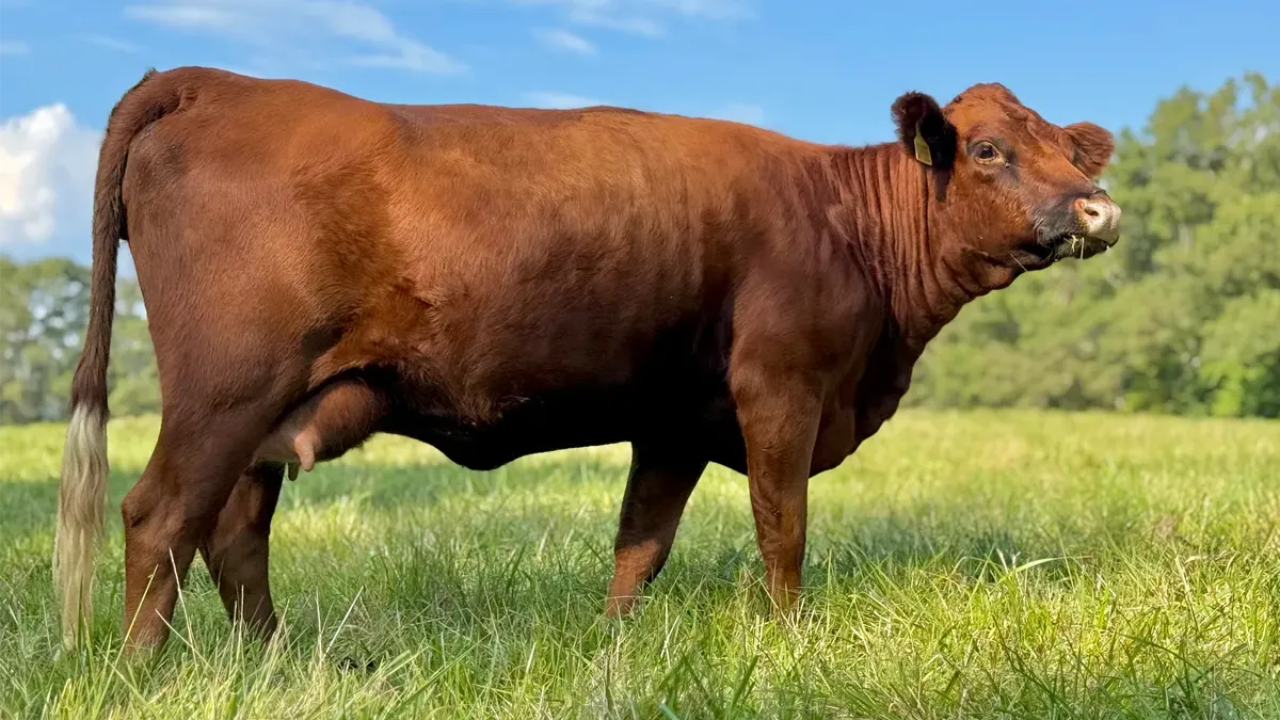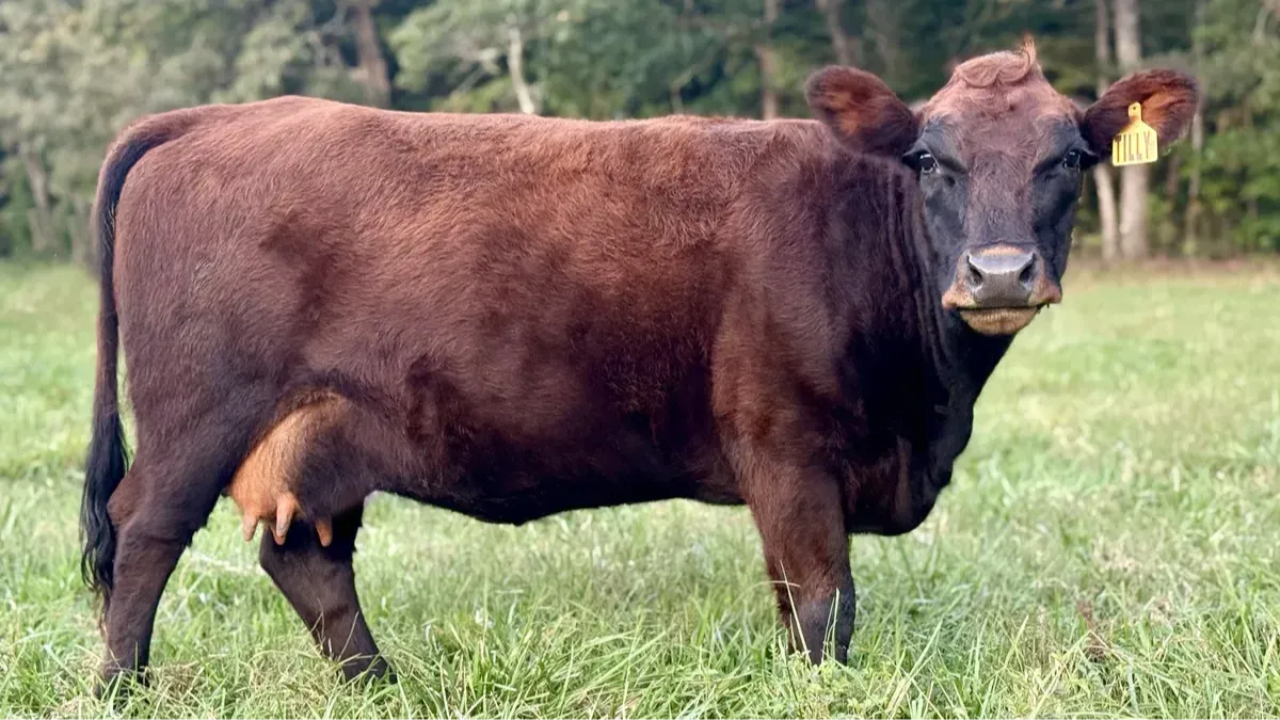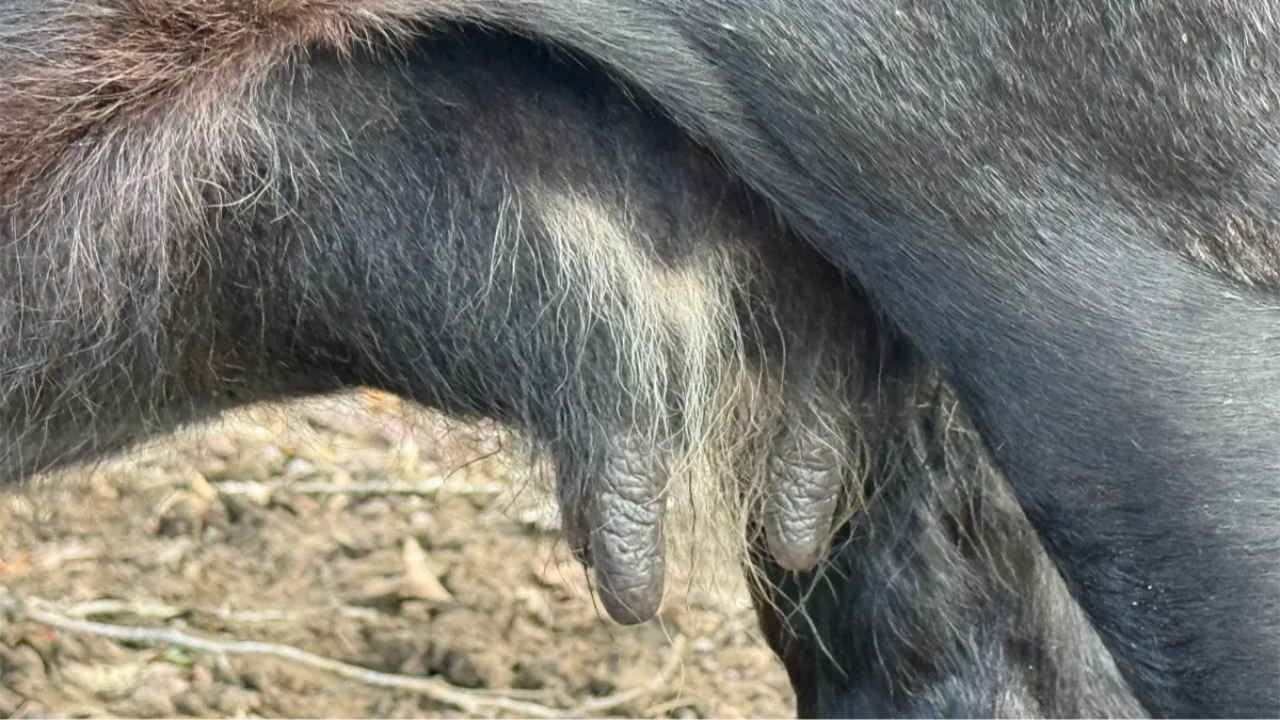Dexter Conformation

Dexter cattle are a unique, dual-purpose heritage breed with distinctive characteristics that combine the best of modern beef and dairy breeds. They are more compactly built than other present-day cattle breeds, displaying a shorter stature of just 38-48 inches tall. Dexters do not exhibit the dairy body type, instead displaying a thicker, heavier body type similar to beef breeds, and yet, they still produce a respectable quantity of milk.
Dexters are the perfect homestead family cow because of their diminutive size, and docile, easygoing temperament. Despite their many positive qualities, not all Dexters are created equally. There is no "perfect" Dexter leaving every steward of the breed striving for perfection in their breeding choices. However, some Dexters (some entire herds) are downright bad and may end up costing you in vet bills (or worse) down the road. Learning to evaluate structure is a great place to start in building your perfect Dexter herd with no regrets.
For the ability to draw accurate comparisons and to make contrasts between individual Dexter cows, you'll first need to be able to identify each part of the animal and discuss the pros and cons of that part's structure. While this article is not all-inclusive for every potential variation of Dexter cattle form, I have attempted to collect a series of images that illustrate the characteristics of proper Dexter structure.
Head and Neck Structure of Dexter Cattle
A cow or heifer should have a refined look through the head and neck that blends smoothly into the shoulders and brisket. The dewlap should be free from an undue amount of excess skin. At Mountain Heritage Farm, we do not allow horned cattle for safety reasons, but if you fancy horns they should be symmetrical, moving gracefully up and forward on cows, and forward on bulls. Horns should be moderately small at the base, tapering towards black or brown tips.

A bull will have one additional part of note -- the crest -- the big, testosterone-induced hump on the back of the neck. Bulls should be rugged and massive through the head, neck, and shoulders. The head should be carried with the poll slightly above the topline of the animal, indicating alertness. The crest over the neck region will vary in size depending on age but should generally increase in size as the bull matures peaking at around age four or five. The neck should be short and thick, with a slight arch to it. This will give the bull a powerful look and will help to support the weight of the head.

The head of the Dexter should be broad and well-proportioned, with a short muzzle and a wide forehead. This will give the animal a strong, stocky appearance. The eyes should be bright and alert without too much white around the iris. Too much white can indicate a wild or restless disposition. Conversely, dull, half-closed eyes can potentially indicate sluggishness. The ears should be proportional to the head, well-set, and carried alertly. The teeth should match the pad with neither an over nor underbite. It should be noted that many calves are born with a slight underbite but quickly grow out of it.

Top Line of the Dexter Cow
The top line from the withers through the back, loin, rump, and tail head should be long and flat. The tail head should be neat and well-set between the pin bones (not too prominent nor too inset). The tail should be carried low with the little tuft of hair at the end, known as the "switch," eventually reaching the ground in mature animals.
This thirteen-year-old cow has a nearly ideal mature, Dexter top line.

An excellent top line is readily evident in very young calves.

There's an odd little growth phase in the life of many Dexter calves where the rear legs will grow faster than the front. Zara, at five months old, is clearly showing this phase. Do not be thrown off by this oddity in development. More often than not, the growth will even out by adulthood. So long as the top line is flat, and the hooks and pins at the proper angle, this phase of growth should sort itself out in due time.

Hook and Pin Bones in Dexters
The hook is what most would call the "hip bone" of the cow. In reality, it is the front of the cow's pelvis. The pin bones are the back of the cow's pelvis nestled alongside the tail head. Take note of the position of the hook and pin bones on any animal you consider for your herd -- even your bull (remember the bull is not simply one member of the herd, he is 50% of your herd). The pin should be slightly lower than the hook to make for easy delivery of calves. A good bit of distance between the bones also facilitates the easy deliveries for which Dexter cows are renowned. The hook bones will be more prominent in some Dexter cows than others. So long as the angle is correct, this is of no concern.

It is possible to unwittingly purchase a Dexter that will not have easy deliveries when you don't know what to look for. Flat or backward-angled hook-to-pin angles can indicate potential calving problems. Having the pin and hook bones angled backward toward the head, as in the red heifer below, is the most serious, potentially requiring calves to be pulled.

Even in this very young Dexter bull calf, it is easy to see that his hook-to-pin angle is ideal.

The Barrel of Dexter Cattle
The barrel of the ideal Dexter should be quite deep. The shoulders should be well-muscled and well-connected to the body. Take note that the depth increases as the barrel moves away from the shoulder. The heart girth should be deep and wide.

The top view of a mature Dexter is closer to that of a beef cow than most dairy breeds. The ribcage should be "well-sprung" meaning wide and rounded. The top of the back should be broad and flat showing good fat cover over the hook bones. It should be noted that the degree of the barrel shape only becomes fully evident once Dexters are mature, however, the experienced eye can see the potential even in young calves.

The width of the barrel is further evidenced by the front and rear views of the cow.

The Legs of a Dexter
I've heard it said, "A Dexter should have a leg in every corner." Legs should be set wide apart, straight, and strong with good bone structure and good muscling as with the cow above. One should also take note of the space between the legs -- especially in the rear. Although the cow above is currently dry, it is readily evident that she has ample room for her udder when her next calf comes. Be cautious about the back legs of your milk producers. A cow-hocked milk cow doesn't have enough space between the back legs to provide room for the udder as illustrated by these two 18-month-old heifers.

Proper Dexter Feet
The importance of the hoof shape of a Dexter cannot be overemphasized. Too much hoof angle, too little hoof angle, uneven hoof growth, "scissor toes," and a myriad of other issues plague the Dexter breed. The feet should be well-formed and strong, with good hoof structure and the toes should always point forward, not in or out. Paying attention to the length of the toes and the angle of the pastern can save a lot of hoof-trimming headaches. Properly angled feet are self-trimming and require no extra care.

Dexter Colors
In purebred Dexters, the color of the coat should be red (varying shades including wild-type), black, dun, or brindle which is the most rare of all Dexter colors. As of this writing, we do not have a dun or brindle Dexter here at Mountain Heritage Farm.

Perhaps you've heard of or seen "White Dexters"? Sadly, they aren't purebred Dexters and the name is confusing to those new to the Dexter breed. "White Dexters" were created in 1999 by breeding a registered White Park bull to ten registered black Dexter cows. They are nothing more than crossbred Dexters. We do not keep "White Dexters" here on Mountain Heritage Farm as we choose to steward the breed that has existed for generations.
Is white completely against the Dexter breed standard? In short, no. Some degree of white is allowed on the udder and up to the navel on the underbelly of registered Dexters. I have one heifer that has a predominantly white udder and a white spot at her navel, however, this is the maximum amount of white allowable in a registered animal. Her white markings are not an indication of crossbreeding, but rather normal appearances of white in the Dexter cattle breed. White on the scrotum, or forward of the navel is undesirable and should be culled.

When making breeding selections, I do not pair animals based on color because in reality -- color is irrelevant. Improving the structure of the animals in my herd is paramount and where I focus my decision-making process.
In Summary...
By analyzing the major parts of Dexter cattle, you can be confident that you are beginning your herd with the best possible animals. If you've already established your own herd, a deeper understanding of the ideal structure of Dexter cattle will ensure that you are producing the best animals possible. That is our goal here at Mountain Heritage Farm -- to steward our herd in such a way as to produce animals in the top five percent of the Dexter breed.
If you want to dive even deeper into cattle structure, you might really enjoy this article from the University of Kentucky on judging beef cattle. While I don't agree with absolutely everything (for example, they encourage flat hook-to-pin angles which is generally unfavorable for a Dexter), there is a lot of information on legs, feet, muscling, general appearance, etc. that transfers readily to the Dexter breed. Click HERE to visit the judging beef heifers page.



